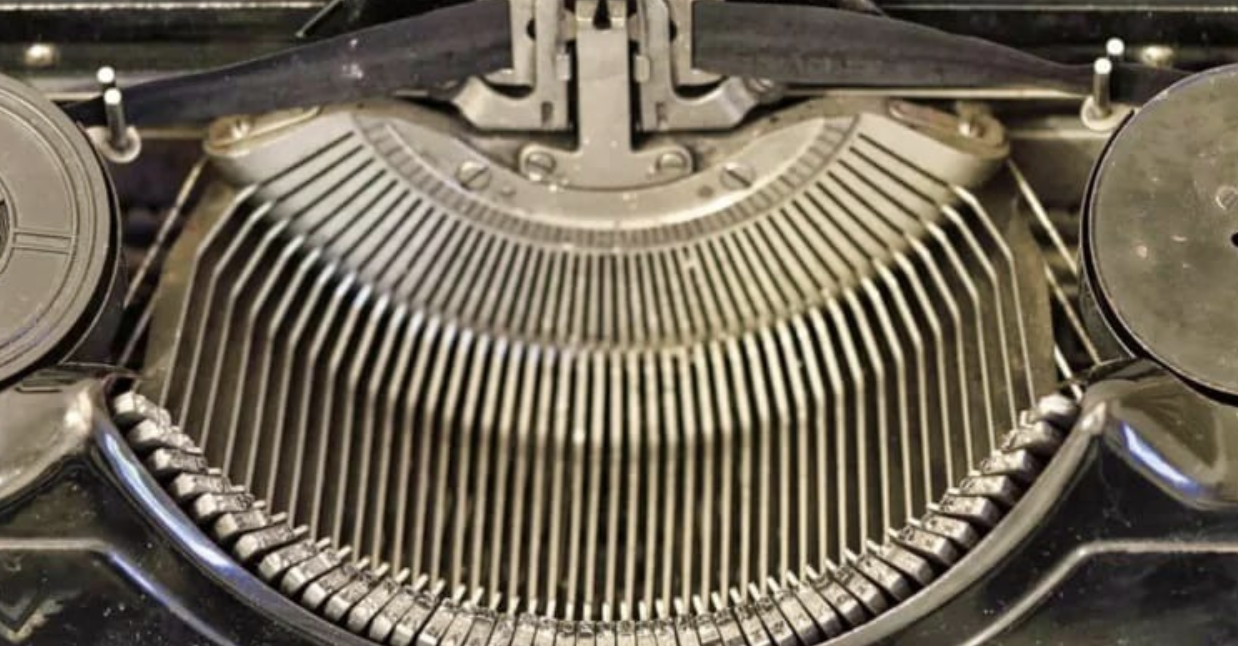In an age dominated by digital devices and touchscreens, let’s take a moment to reminisce about a beloved machine from the past – the typewriter. For those of us who are a bit older, the typewriter holds a special place in our hearts. It takes us back to a time when writing was a tangible and immersive experience. So, let’s embark on a journey through the history and legacy of these iconic writing machines.

The History of Typewriters
While the concept of a mechanical writing machine can be traced back to the 18th century, it wasn’t until the 19th century that typewriters as we know them today came into existence. The Remington No. 1, also known as the Sholes and Glidden typewriter, was introduced in 1873 and became the first commercially successful typewriter. This remarkable invention marked a significant milestone in the mechanization of writing.
One of the enduring features of typewriters is the “QWERTY” keyboard layout. This layout, which is still used on our computers and gadgets, was designed to prevent commonly used letter combinations from jamming in mechanical typewriters. It’s fascinating to think that this arrangement, born out of practicality, continues to be part of our digital lives even today.
Typewriters and Society
The impact of typewriters on communication and society cannot be overstated. Let’s explore some ways in which these machines shaped our world:
- Speed and Efficiency: Typewriters revolutionized the speed and efficiency of writing and document production. Professional typists could produce papers much faster than by hand, boosting office and commercial productivity.
- Document Standardization: With the precision of each character, typewriters brought a level of consistency to documents. This standardization was particularly important for legal and official papers, ensuring accuracy and reliability.
- Journalism and Publishing: The typewriter played a crucial role in journalism, allowing reporters and writers to produce text at a much faster pace. This led to quicker news transmission and the growth of newspapers as a primary source of information.
- Access to Writing: Typewriters made writing more accessible to a wider range of people. As the price of typewriters decreased over time, more individuals could engage in professional writing and correspondence, opening up new opportunities for expression.
- Archiving and Preservation: Typewritten texts offered greater durability compared to handwritten manuscripts. This improved archival quality has contributed to the preservation of historical documents and literary works, ensuring they can be enjoyed by future generations.
A Lasting Legacy
Although typewriters have been largely replaced by computers and digital devices, their impact and legacy live on in numerous ways:
- Collector’s Items: Vintage typewriters have become highly sought-after collector’s items and antiques, valued for their unique designs and historical significance. Owning one of these beauties is like owning a piece of history.
- Nostalgia and Inspiration: The sound of clacking typewriter keys and the tactile experience of typing generate a sense of nostalgia. Some authors still find creative inspiration in the physical act of typing on a typewriter, fostering a connection to the writing process.
- Artistic Expression: Artists and designers incorporate typewriter writing into their work, blending classic beauty with modern innovation. This fusion of old and new adds a touch of charm to their creations.
- Timeless Symbolism: Typewriters have made appearances in literature, movies, and art, symbolizing different eras and evoking a sense of timelessness. They serve as a reminder of the power of the written word and its enduring impact.
- Writing Retreats and Workshops: In some writing retreats and workshops, typewriters are offered as tools to enhance creativity and focus. The vintage charm and simplicity of typewriters can transport writers to a different time, away from the distractions of the digital world.
The typewriter, a mechanical marvel that revolutionized communication, holds a special place in our hearts. Its journey from humble beginnings to sleek and practical gadgets has shaped the way we create and consume written information. Although technology has moved beyond typewriters, their legacy continues to inspire writers, artists, and enthusiasts alike. Typewriters remind us of the physical connection between typing and the creation of words on paper, providing an eternal link to our literary heritage.





